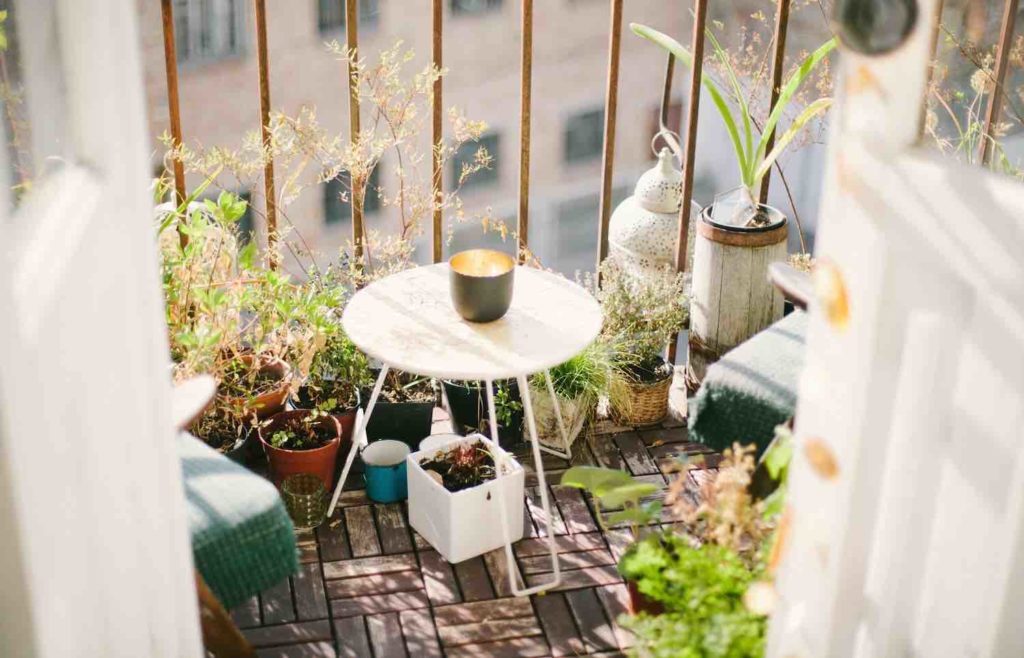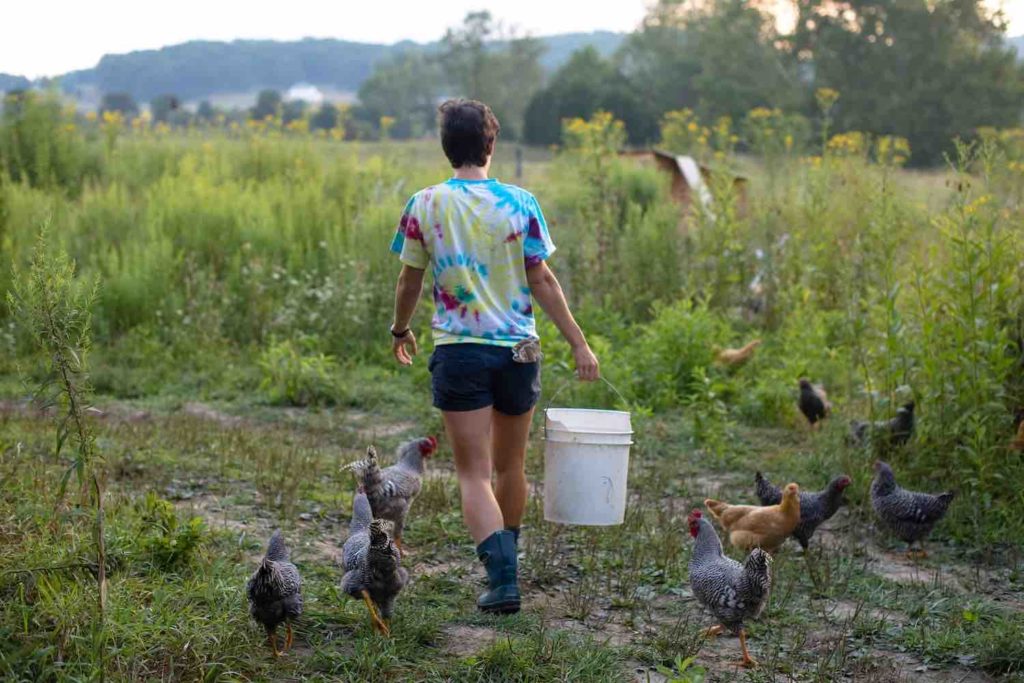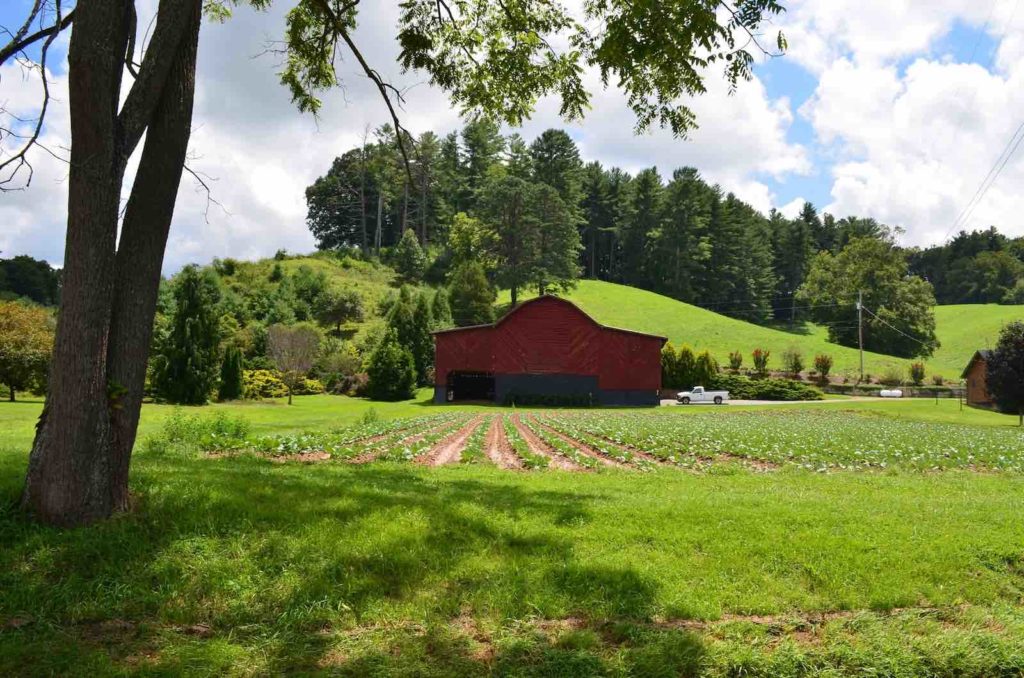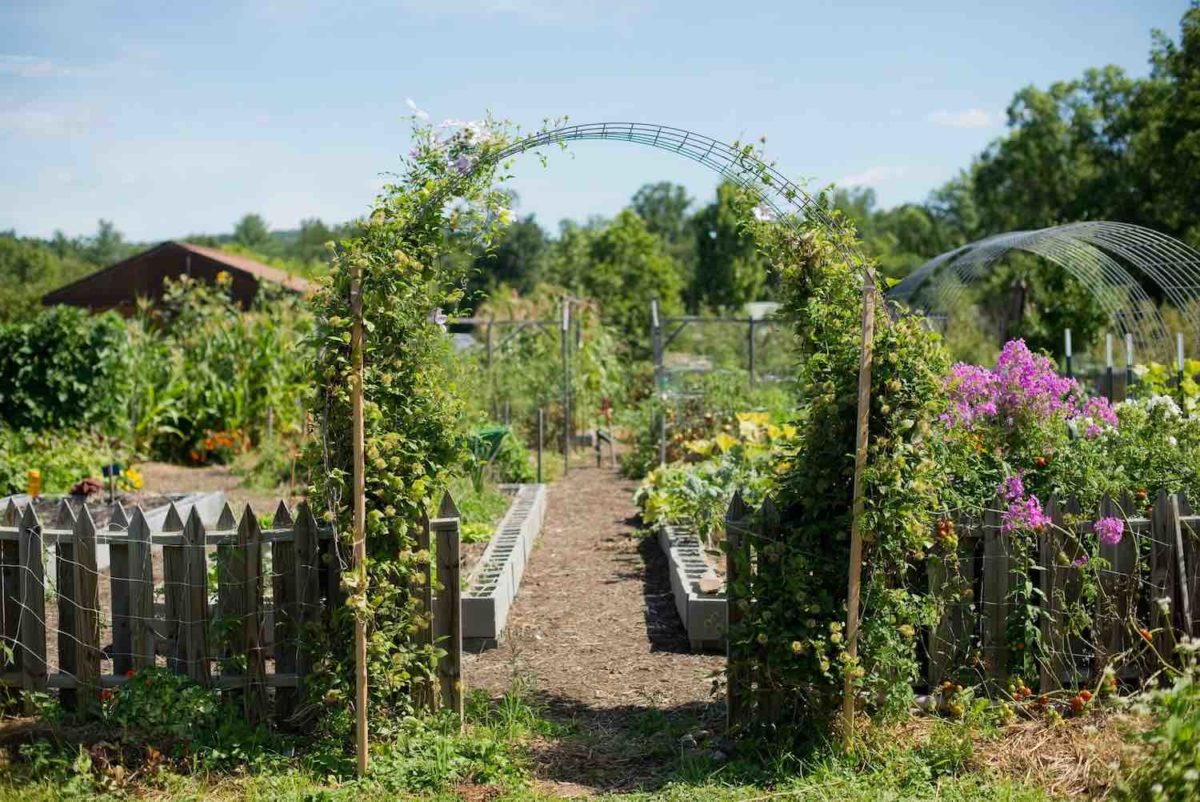Homesteading is a lifestyle choice that’s grown in popularity over the last few decades. Homesteaders are people who want to live off the land and produce their own food, energy, shelter and goods.
They do this by producing as much of what they need on site as possible or trading for it with others that have excess production capacity.
The homesteader’s goal is sustainability – living with minimal impact on natural resources so we don’t leave a footprint that future generations will regret.
Most people think of rural farmers when they hear the term “homesteader”, but you can be a city slicker too! You just need to make some changes in your life: no more going out to eat each night, fewer trips to the shopping mall and think about making your own food at home.
The next level of homestead is to combine this with an off grid lifestyle. Off grid homesteaders do what we’ve been talking about – producing their own food and energy – but the difference is that they often live in remote areas where it isn’t practical to directly connect to the utility grid.
Read on if this is a topic that interests you!
Living off grid by definition
Off-the-grid (OTG) living means you’re not connected to a public utility power line. You have a generator to provide power or solar panels that charges batteries. Off grid living can also mean you’re far enough away from city water that it isn’t practical to connect.
Living in a homestead by definition
A homestead is a place where someone lives and works. It can be a small plot of land or a larger area depending on the needs of the person who lives there.
Homesteaders often grow their own food or raise animals to eat meat, which not only saves them money but also creates a self sufficient lifestyle.
Any dwelling with its land and buildings where a family makes its home.
Definition of a Homestead
Types of homesteads
Traditional homesteads
A traditional homestead is often confused for off grid living. A traditional homestead is normally quite rural and includes acres of land to be able to create a sustainable living setup.
It would normally include small livestock such as chickens, pigs, and rabbits. They make use of their land to grow food and would practise different ways of food storage for their own use. There are also ways on how to best store your farm feed.
Urban homesteads
An urban homestead is usually more on the side of just being sustainable. The urban homesteaders can choose to grow their own food on a small plot or use that space for something else like animals, beehives, bigger garden.
They also try to create an eco-friendly environment inside their house. A great way to get started with an urban homestead is to setup your own greenhouse.
Apartment homesteads
An apartment homesteader is fairly similar to an urban homesteader. The difference being that they can’t have livestock or grow their own food inside the apartment complex.
If you’re living in an apartment, it would be best if you had a balcony where you could grow some vegetables and herbs just for yourself. There’s an entire sub-culture in homesteading around balcony gardening.

Combining off grid with homestead
Combining the two concepts off grid life in a homestead is nothing new. In fact, it’s been going on for centuries with people from all over the world finding a way to live self-sufficiently while disconnected from direct connections to city utilities.
For most of us, the only real difference is that we’re generating more of our own power with solar panels or harvesting wind power by using wind turbines instead of using access to a power grid from a city.
Combining off-grid living with the creation of a homestead could be a wonderful thing if you’re looking to break free from the stress of living a city-hamster-wheel-life or simply to save money.
But first, you need to find land or where you would like to setup your homestead, that’s what we’ll go through in the next section.
I want to go off grid! How do I assess land for a sustainable Homestead?
Before you begin, it’s important that you have a clear goal in mind. Do you want to go completely self-sufficient by growing your own food and generating your own power? Or is it just getting rid of the monthly bills for energy and water? Think about these things before buying any kind of land.
Finding land is one of the most important first steps but what should I look for when I’m looking for land to homestead?
There are some things you need to take into consideration when trying to buy a plot of land. Here is a list of questions you should ask yourself before buying the place:
- Is it close enough to an electricity grid that I can connect in case I change my mind in the future?
- Is the land flat enough to make a garden?
- Are there any trees on the land? What kind of trees are they? Are they growing in convenient places where I can use them e.g. creating structures for livestock, storage etc.?
- Can I run water lines from where it currently is to where I would like to place my house/homestead/tiny house?
- Is the land close to a good drinking water source?
- If you’re looking to grow your own food, is it suitable for that as well or do I need to think about changing the soil if it’s not fertile enough?
- Can I also use this piece of land for other purposes such as raising and growing livestock?
How to live off grid in a homestead
Now that you’ve found a beautiful piece of land, it’s time to start making your very off grid home and homestead. Living completely independent is quite difficult and not something everyone can do.
It’s best to start small and slowly build your home up until you’re completely independent which takes time, energy and money.
Here are the steps you need to take when trying to live off grid in a homestead:
1. Start early so that you have all year round to get used to it
The first thing is always the hardest. You need to get used to the idea of living without access to electricity or clean drinking water, so start early by limiting your use of electric appliances. Have a shower instead of taking a bath or using a hose outside.
Eat food that needs less cooking time and then slowly reduce the amount of time you’re spending on these things over time until you don’t need them at all.
2. Get used to collecting rainwater for when you can’t access it anymore
When living off the grid in a homestead, you’ll always have the risk of eventually not being able to use your water supply because there will be no more running water coming into your home or direct connection to electricity.
To solve this problem, start early and build an area where you can collect rainwater. It could be as simple as a bucket or rain barrels because when it’s raining ever day or if there’s plenty of water in your region, this won’t make such a big difference.
It can not be stressed enough how important it is to make sure you have appropriate water storage.
3. Build a compost wherever possible using organic materials
Building a compost in your homestead is easy and can be done in several different ways, it’s crucial for your self sufficiency!
You can make a cylindrical bin with wood or cement but the most basic way to do this is by using a tarpaulin to cover an area of your homestead.
If you’re making anything out of wood, it will eventually rot so don’t forget to put holes in the bottom for the water to escape!
4. Start by growing your own food
Growing your own vegetables can be fun and easy but also quite difficult depending on where you live and what kind of soil you have.
If you need to change the soil in your garden, do that before growing any food because it can take several years for your soil to become fertile.
Having said this, growing root vegetables is normally a great way to start. The easiest way would be using organic materials like dead leaves or compost in order to make it suitable for growing food.
5. Start building livestock such as chickens to provide you with fresh eggs and meat
Chickens are a great option for self sufficiency because they’re easy to take care of and can give you many benefits such as eggs or meat. You can read our guide on everything you need to know to get started with chickens.

Benefits of living off grid in a homestead
Living off grid means you are completely independent from the traditional infrastructure that most people rely on every day, such as electricity and running water. This can be both a good and bad thing; while it gives you freedom, it also requires hard work and planning.
Saving money is another key benefit of living off grid in a homestead. You can do this by growing your own food, collecting rainwater, and using renewable energy sources like solar or wind power. This not only saves you money in the short-term, but it also helps reduce your long-term costs.
Depending on how you chose to setup your housing, if you do it as a DIY project or if you buy a tiny house you’ll be able to escape other expenses such as property taxes. If you’re interested more about installing solar panels for your farm, please read this amazing piece by Zoe: Solar for Farmers.
Living a more sustainable and eco-friendly lifestyle is another benefit of going off grid in your homestead. This means reducing the amount of unnecessary waste that goes into landfills, recycling whenever possible, buying affordable items made from recycled materials, and using renewable energy sources whenever possible.
Going green can be fun, but it’s also good for the environment. It’s also a great opportunity to learn more about waste management!
Working on your homestead is another benefit of living off grid in a homestead, especially if you want to grow your own food or build something using raw materials like lumber and stone.
You’ll be able to get rid of stress by spending time in nature while making things with your hands, which can make you feel more fulfilled in life.
Lastly, living off grid gives you full control over your schedule and future. This means no more disappointing customers or bosses, but it also comes with a lot of responsibility because if something goes wrong, the only person who will suffer is you!
Going off grid takes planning and effort but can be worth it in the long-term.

Downsides of living off grid in a homestead
There are many benefits of living in an off grid homestead but of course, there are also downsides. These include:
1. You need more money up front
Doing everything by yourself can be expensive and require a lot of hard work, especially if you’re starting from scratch and building on undeveloped land.
Although it might not cost as much as living in the city, it could cost you tens of thousands of dollars if you decide to build a house or homestead yourself.
2. You must plan ahead carefully
You’ll need to know exactly what kind of equipment and tools you’ll need, how much food you’ll be able to grow by itself, where your water supply will come from, how you’ll get rid of your sewage, and many more different factors.
It’s definitely not something to take lightly because getting it wrong can be dangerous.
3. You need to rely on yourself
Going off grid means you are entirely responsible for everything that happens in your life. There won’t be anyone who will help you if something goes wrong, which can be both scary and stressful.
4. You might have trouble in the future when you try to sell your homestead
Although you can’t really say that living in an off grid homestead is a bad thing, some people might not like the idea of purchasing property without running water or electricity.
This means it can be harder to sell your homestead if you decide to move, even though there are many people who would love to buy it.
5. You have limitations to access modern conveniences like the internet and mobile devices
Living off grid means giving up all kinds of modern conveniences such as mobile phones, having consistent access to electricity, and using the internet whenever you want.
Although you can still use smartphones and tablets, you’ll need access to power in order to do it.
6. You must be prepared for emergencies
If something happens (such as a hurricane or flood) and you lose all of your equipment, you might not be able to rebuild everything in time in order to produce food.
Making sue you have different sources for your power supply such as solar panels and a wind turbine greatly reduces the risk!
Tips for living off grid in a homestead
If you decide to live in a homestead, make sure you can follow these tips to be as efficient as possible:
1. Use alternative power sources such as solar panels and wind turbines for electricity
Although it’s harder to make money off of your homestead if you purchase equipment like this, having access to free energy is definitely worth it.
2. Grow your own food and buy in bulk to save money
Even if you only know the basics of farming, you can most likely make a huge difference by growing your own food such as tomatoes and potatoes.
If you don’t grow enough to feed yourself every day, make sure to buy what’s left at good prices from farmers or big box stores like Costco.
3. Be careful about where you source your water supply
Although it’s possible to collect rainwater, this method usually isn’t practical because you’ll need too many storage tanks to be successful. It’s better to find a nearby well or purchase water from farmers instead of storing it yourself.
4. Find ways to purify your water if you store it yourself
Although most people would recommend using a filtration system, they can be expensive and require electricity. You can also use chlorine, but this isn’t easy for beginners so it’s best to work with someone who knows what they’re doing.
5. Get rid of sewage / create a septic system in a way that won’t harm the environment
Although burning it is a common, cheap method to get rid of sewage, doing so will produce dangerous greenhouse gases. This makes it illegal in most places nowadays, which means you’ll need to find something else to do with your waste!
Conclusions
Living off grid can be a great choice for those who want to reduce their environmental impact, but it definitely isn’t easy.
It takes a lot of work and preparation to get everything set up correctly, and you need to be prepared for emergencies.
But if you make sure to follow all of the tips in this article, you will definitely be on your way to living off grid!
FAQ on living off grid in a homestead
We source these questions from queries that people are “asking Google”, then we try to answer them in the best way we can!
The main difference between the two is that a homestead is attached to an existing power grid (“grid life”), while off-grid means you are not attached to any power grid.
Buy land, build or buy a house, setup your own grid/power system and start growing your own food!
An off-grid homestead is a self-sustaining property where you grow your own food, generate your power and harvest your water.
You become self-sufficient by growing your own food, getting an alternative source of energy, and providing your water supply.
In order to have wifi, you need power – so unless you have a generator or another way of generating your own electricity, then no.
Some advantages of living off grid are having your own land, growing your own food, harvesting your own water and saving money.
The main disadvantage of living off grid is that you lack access to public facilities such as hospitals, police stations and schools.
Yes, you can build a house off-grid, as long as it has basic services such as an electrical system and water.
Homesteading is becoming popular because people want to save money, be more friendly to the environment and have more control over their time.
A homesteading lifestyle is a way of living where you produce your own food, energy and other things that keep your life going.
It costs as much as you’re willing to spend! If you want a piece of land and a house built for free, then it’ll be free. But if you want to buy a piece of land and build a house from scratch, then it’ll cost around $25,000 or more.
According to some estimates, there are over 1 million homesteaders in the US alone.
It’s not illegal to live off the grid, but there are certain restrictions in place so you have to be aware of them before moving ahead.
